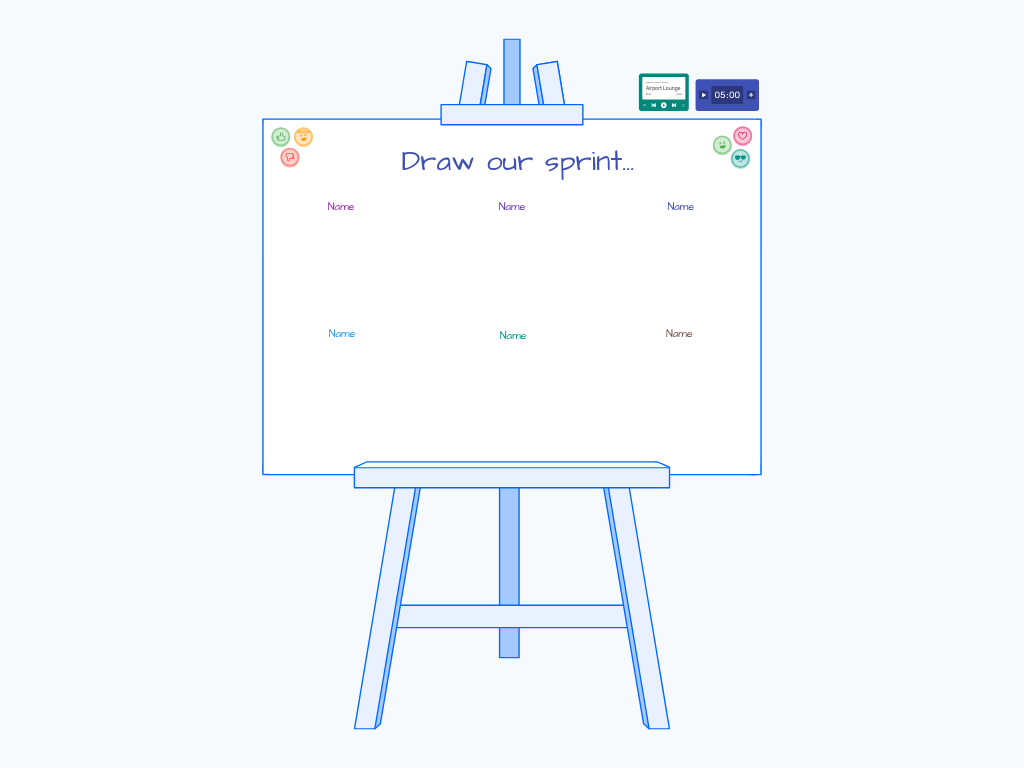Wishes / Risks / Appreciation / Puzzles Retrospective
The WRAP retrospective provides development teams with a balanced framework for reflection that goes beyond traditional formats. This weather-themed retrospective encourages participants to think bigger about their work by focusing on aspirations, potential obstacles, positive acknowledgments, and areas of uncertainty—all critical elements for continuous improvement in agile environments.
What Is the WRAP Retrospective?
The WRAP retrospective is a comprehensive reflection format that uses four distinct categories to capture a team's complete experience:
- Wishes (☀️ Sunny): Team aspirations and ideal-world scenarios that inspire forward thinking
- Risks (⛈️ Stormy): Potential issues that could derail progress if not addressed
- Appreciation (🌬️ Breezy): Recognition of people, teams, or things deserving acknowledgment
- Puzzles (⛅ Cloudy): Uncertainties or missing information that require clarification
This weather metaphor helps teams visualize their project landscape—from sunny wishes to stormy risks—creating a complete picture of where the team stands and where it wants to go.
Benefits & When to Use
The WRAP retrospective is particularly valuable when:
- Your team needs to break out of conventional thinking patterns
- You want to balance problem-solving with appreciation and aspiration
- Team members are struggling to see the bigger picture
- You've been using the same retrospective format for too long and need a refresh
- The team needs practice in identifying risks before they become issues
Teams using this format report stronger forward-thinking, better risk management, improved team morale through recognition, and fewer misunderstandings due to addressing puzzles directly.
How to Run a WRAP Retrospective Session
Total time: 45-60 minutes
Introduce the template (5 minutes)
- Explain each of the four categories and their weather metaphors
- Emphasize the importance of thinking broadly and imaginatively
- Set expectations for honest, constructive contributions
Individual reflection and note creation (10 minutes)
- Each team member silently adds sticky notes to all four quadrants
- Encourage specific examples rather than generalizations
- Remind participants to consider both technical and team aspects
Present and discuss (20-25 minutes)
- Take turns having team members present their notes
- Group similar items together as patterns emerge
- Use the participant highlighting feature to focus on one person's contributions at a time
Add reactions (5 minutes)
- Team members use the Reaction tool to show agreement/disagreement with sticky notes
- This helps prioritize which items deserve the most attention
- Look for notes with strong reactions as indicators of team consensus
Create action items (10-15 minutes)
- Identify 3-5 concrete actions based on the most popular or important sticky notes
- Assign owners and deadlines to each action
- Place them in the dedicated Actions zone for visibility
Tips for a Successful WRAP Session
Balance across quadrants: Encourage roughly equal contributions to each section to ensure a well-rounded retrospective.
Make wishes specific: Push for actionable wishes rather than vague statements—"I wish we had better documentation for the API" is more useful than "I wish things were better."
Differentiate puzzles from risks: Puzzles are about missing information or understanding, while risks are known potential problems. Help the team distinguish between them.
Connect appreciations to individuals: Ensure appreciations name specific people or teams rather than being generalized—personal recognition goes further.
End on actions: Always conclude by converting insights into concrete next steps with clear ownership.
Consider timeboxing each category: If one category (often Risks) tends to dominate, consider giving equal time to each section during discussion.
The WRAP retrospective helps remote development teams develop a more balanced view of their work, encouraging both critical thinking about challenges and positive acknowledgment of successes—essential elements for continuous improvement in agile environments.



